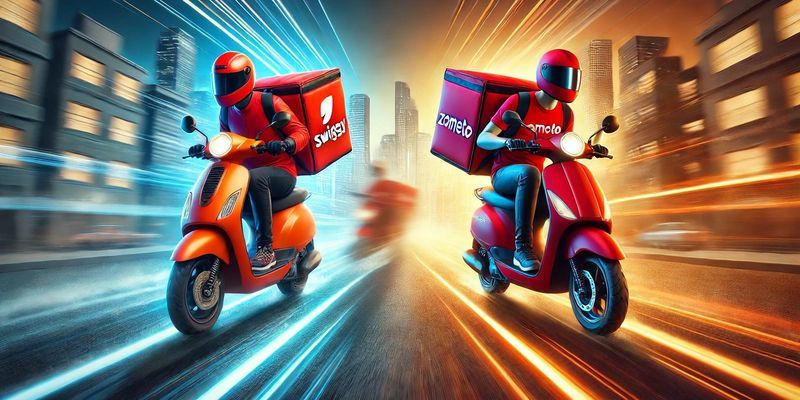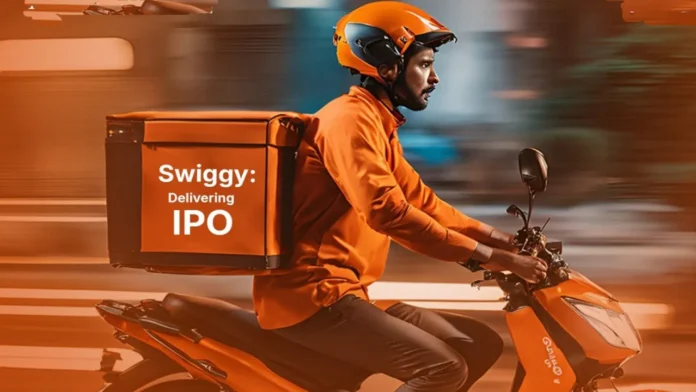Zomato and Swiggy’s 10-Minute Delivery initiative has stirred the pot with its bold promise of delivering food in under 10 minutes. While the idea may sound like a dream for hungry customers, it has sparked numerous questions about feasibility, ethics, and the real cost of such lightning-fast services. Here are some key points that highlight why this model may be more problematic than it appears.
1. The Logistics Dilemma: Can It Really Be 10 Minutes?
Promises of “10-minute” delivery raise serious logistical doubts. Even for a well-oiled food delivery machine, the process involves multiple steps:
- Cooking: Preparing fresh food from scratch.
- Packing: Ensuring the order is correctly and securely packed.
- Assigning Riders: Matching delivery personnel in real time.
- Travel Time: Navigating urban traffic to reach the destination.
How can all these steps be completed in just 10 minutes? Critics argue that such promises rely on shortcuts like pre-cooked food or hyper-local hubs with limited menus, which contradict the essence of fresh meals from diverse restaurants.

2. Traffic Chaos: Racing Through Congested Cities
India’s urban centers like Delhi, Mumbai, and Bengaluru are plagued by traffic snarls, even during non-peak hours. The pressure to meet such aggressive delivery timelines could force riders to:
- Break traffic rules.
- Speed through crowded streets.
- Risk accidents while trying to shave off critical seconds.
Should convenience come at the cost of safety? The NRAI and road safety advocates have pointed out that such policies could increase the already alarming number of road accidents involving delivery personnel.
3. Worker Exploitation: Unrealistic Targets
The promise of 10-minute delivery might sound like a technological breakthrough, but it heavily depends on the shoulders of delivery riders. These workers often already face:
- Low pay and high commissions.
- Lack of health insurance or accident coverage.
- The constant stress of meeting strict deadlines.
With the introduction of ultra-fast delivery timelines, workers are likely to bear even more pressure, pushing them to exhaustion and potentially unsafe working conditions.
Are delivery platforms prioritizing customer satisfaction over worker welfare?
4. Quality vs. Speed: Compromising on Food Standards
Can food prepared and delivered in 10 minutes maintain the same quality as a meal cooked with care? The logistics of 10-minute delivery could lead to:
- Pre-cooked or semi-prepared meals being reheated instead of freshly made.
- Poor quality control due to rushed cooking and packing.
- Missteps in hygiene and food safety to save time.
Customers might soon realize that speed comes at the cost of taste and quality, eroding trust in the service.
5. Misleading Marketing: The Maggi Comparison
Much like Maggi’s “2-minute” claim, Zomato and Swiggy’s “10-minute” promise seems too good to be true. The term creates an illusion of instant gratification but ignores critical factors like:
- Preparation time before the clock starts ticking.
- Delays caused by traffic, weather, or unforeseen circumstances.
Customers might start questioning the authenticity of the promise, turning what seemed like a brilliant marketing move into a credibility issue.
6. Cannibalizing Restaurant Profits
Restaurants partnering with Zomato and Swiggy are increasingly worried about being sidelined by private-label products. The platforms’ use of cloud kitchens and pre-cooked meal hubs enables them to control the entire process—from preparation to delivery—leaving restaurants struggling to compete.
Does this model spell doom for smaller eateries? The NRAI argues that by promoting their own food options, delivery platforms are biting the hand that feeds them, creating an uneven playing field.
7. Unrealistic Expectations for Consumers
The success of food delivery apps relies heavily on consumer trust. However, the 10-minute delivery promise risks setting unrealistic expectations. Delays caused by inevitable factors like traffic, incorrect addresses, or bad weather could lead to:
- Customer dissatisfaction.
- A surge in complaints and refunds.
- A potential drop in app ratings and user retention.
Such a model may prove to be unsustainable in the long run, driving customers toward competitors who prioritize quality and reliability over speed.
8. Environmental Concerns: Speed vs. Sustainability
The push for ultra-fast deliveries could lead to:
- Increased use of single-use plastics for quicker packaging.
- Greater carbon emissions from hurried deliveries.
- A wasteful supply chain for pre-prepared meals.
With sustainability becoming a key focus for customers and brands alike, this model may clash with long-term environmental goals.
9. Legal and Regulatory Challenges
The NRAI has suggested taking the matter to the Competition Commission of India (CCI), citing unfair practices and anti-competitive behavior. Questions that regulators may need to address include:
- Are platforms using their dominance to sideline restaurants?
- Are riders being put at risk to meet impossible timelines?
- Is the promise of 10-minute delivery misleading to consumers?
Regulatory intervention could force platforms to rethink their strategy and prioritize safety and fairness over marketing gimmicks.
10. Is This the Future of Food Delivery?
While 10-minute delivery might sound revolutionary, it’s worth asking: Is it really what consumers and the industry need? Speed alone cannot define the future of food delivery. Balancing quality, safety, and worker rights is essential to creating a sustainable and ethical ecosystem.
The aggressive pursuit of speed at any cost risks alienating key stakeholders, from restaurants to delivery personnel and even customers.
The Road Ahead
The 10-minute delivery model by Zomato and Swiggy has undoubtedly shaken up the food industry, but it comes with significant challenges. As the debate intensifies, platforms must find a way to balance innovation with responsibility, ensuring that their services benefit everyone involved—not just the end consumer.
Will this bold experiment survive, or will it collapse under the weight of its own contradictions?


